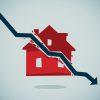Source: Mansion Global —
Affordable cities continue to dominate the housing market as rising mortgage rates have made most home purchases less affordable, pushing many buyers out. Homes are still sitting on the market longer, and more sellers are cutting prices.
To help home buyers decide on the best place to make housing investments, The Wall Street Journal collaborated with Realtor.com to rank which housing markets are expected to provide a strong return on investment and offer a nice place to live.
The WSJ/Realtor.com Emerging Housing Markets Index looks at real-estate and nonhousing indicators. This seventh release includes the same set of indicators from previous installments. The index is updated quarterly.
Why is Lafayette, Ind., at the top of the list? Read more about it here.
Methodology
To identify the top emerging housing markets, The Wall Street Journal and Realtor.com reviewed data for the 300 most populous core-based statistical areas, as measured by the U.S. Census Bureau. (Note: The Journal and Realtor.com are both owned by News Corp.)
The overall methodology explores two main areas: real-estate markets (50%) and economic health (50%). Those two areas comprise the following key indicators:
Real-Estate Supply (16.6%)
Measures the relative scarcity of real estate for sale in a market compared with others based on real-estate listings’ median number of days on the market. Markets with a high supply score have relatively few days on the market compared with other areas. That relatively limited supply is likely to lead to home-price growth. In contrast, markets with a low supply score have more days on the market compared with other areas, indicating that relatively abundant supply will help alleviate pressure on home prices. (Source: Realtor.com)
Real-Estate Demand (16.6%)
















